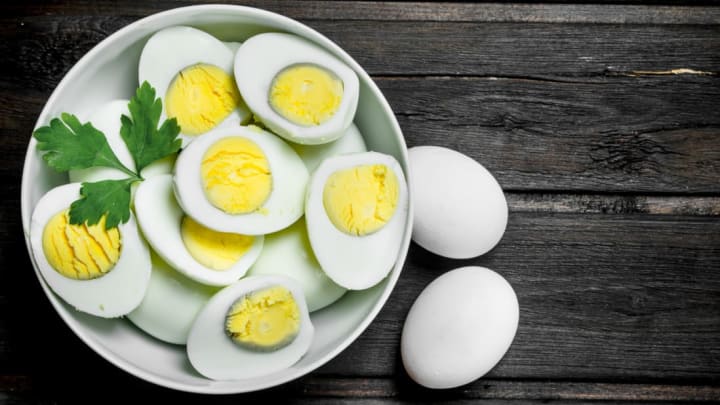Hard-boiled eggs might be an ideal snack. They’re easy to make, easy to consume, don’t make a mess, and provide protein without an excessive amount of calories.
But if you’ve ever peeled an egg, you might have noticed a possible wrinkle in your plans. Some hard-boiled eggs have a gray or green ring of discoloration between the white and the yolk, which might prompt you to wonder if the chicken in question had some exotic disease or whether the egg is safe to consume.
Good news: It is. The gray coloring appears due to a chemical reaction when boiling the egg. Proteins in the egg are held together by sulfur, which breaks down in heat and becomes hydrogen sulfide. Iron in the egg yolk can alter it further so it becomes ferrous (iron) sulfide on the surface. Too much iron in your water can produce a similar result.
What does this have to do with the color? It’s the iron sulfide that creates the gray (or green) rings around the egg, and that’s usually a result of overcooking it. According to Sauder’s Eggs, a crumbly, dry yolk takes about 14 minutes in boiling water. One way to avoid overcooking is to dip the cooked eggs in an ice bath immediately afterward.
If you do wind up overheating them, the eggs might be a little firmer than you’d like, but there’s nothing about the color that indicates any food safety issue. The same holds for eggs that have speckling (brown spots) or bumps on the shells. So long as you use store-bought eggs within three weeks of purchase and cook the yolks until they’re firm, you’ll be good to go.
[h/t Simplemost]
